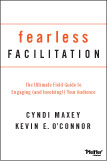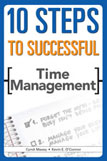Articles
How to Talk to the Boss: Ten Tips for the New Hire
October 14, 2006
by Cyndi Maxey
0 Comment
New York gossip columnist M. Barker once wrote, “The idea of strictly minding your own business is strictly rubbish. Who could be so selfish?†Making conversation, especially with the boss, is very UNSELFISH. Look at it as GIVING and GROWING.
However, the typical executive today is busy; he or she has a lot going on every day. You’ll need to take the initiative. For the boss to know you, you need to be able to reach out and ask about and share about. Continue Reading →
How Not to Fall Flat on Your Face in Tomorrow’s Presentation!
By Cyndi Maxey and Kevin E. O’Connor
Even the best presenters get nervous. Normal nervousness is very, very normal. The abnormal kind is the worst of all and it is often self-induced. You arrive late, audiovisual is nowhere to be found, you tell a joke that has been told by a prior speaker, or you see nothing but vacant looks on the faces of your audience.
None of this is ever the fault of the audience, audiovisual company, or the limo driver. It is always the speaker who is responsible.
Don’t fall on your face by learning the secrets of presenting like a pro. Continue Reading →
Break the Rules and Make an Impact With a Not-So-Standard Presentation
By Cyndi Maxey, CSP, and Kevin E. O’Connor, CSP
The Challenge: Make your Ordinary Meetings Memorable
One thing we know as coaches to hundreds of presenters is that you are never remembered if you are ordinary. Every year your meetings team works to find extraordinary keynote speakers to challenge and inspire members. Wouldn’t it be great if you could achieve the same effect with everyday meetings—training sessions, Board reports, or project meetings?
The Solution: Break the Rules!
You can create the same effect if you step outside what others think they should be and make them what you know they could be. To do this, you may need to break some rules—or maybe just old habits, like the Medical Group Management Association did in their recent leadership development trainer training.
Being you is more important than being perfect. Memorable speakers are effective because they convey a natural rapport. Adrienne Antink, CAE, Vice President, Learning and Networking Center of the Medical Group Management Association, shares, “I remind our leadership development presenters that they don’t always have to have the answers. Get the audience to solve the problem, not you. “
Jitter Busters: Scaring Away Presentation Nerves With Skill and Success
By Cyndi Maxey, CSP and Kevin E. O’Connor, CSP
Abstract: “Jitter Busters: Scaring Away Presentation Nerves with Skill and Successâ€
This article outlines ten key areas for battling nervousness for pharmaceutical professionals who present one on one and to groups. Readers will learn techniques that the pros know to set themselves up for calm, confident one on one or group presentations when inside they may be quaking. These techniques focus on planning, preparation, practice, and presentation options. The final points review how the ten jitter busters can work on behalf of the presenter.
The best presenters get nervous. The best singers, dancers, and actors all get nervous. Many worry when they are not nervous! Whether presenting one on one or to a group, normal nervousness is very, very normal—and very, very necessary. When you are gearing up to perform at your best, adrenalin kicks in—causing your temperature to rise, your breathing rate to increase, your hands to shake, your mouth to dry out, your words to stumble and your palms to sweat. While most professional salespeople, speakers and performers will admit to feeling these symptoms, few understand “what else†they can do when the normal jitters start to rock their world and feel oh, so not normal. Continue Reading →
Your Telecommunications Image
How you use your telecommunications tools says a lot about you, and if you’re a marketer, your telecommunications should say “excellenceâ€! Today’s business marketing professionals must know not only how to use technology with excellence but also how to select the appropriate telecommunications tool. Is e-mail best? A phone call? A fax? For people who began their business careers with only a telephone, the latest telecommunications choices can be especially daunting. A baby boomer–aged client recently told me, “It gets so I just don’t know what to use. Sometimes I send an e-mail and leave a voice mail to make sure I’m covered, and then I still think that maybe I should have sent a fax.â€
As I shared with him, it is best to return the message using the same medium the sender used, if possible. At least you’re being consistent. If that’s not possible, explain that you did receive the message (i.e., e-mail) and why you’re responding in the manner (i.e., telephone) you’ve chosen. Continue Reading →
It’s Your Party: Choosing the Right Meeting Venue to Create a Most Memorable Experience!
CO-AUTHORS:
Cyndi Maxey, CSP
Kevin E. O’Connor, CSP
Abstract: “It’s Your Party: Choosing the Right Meeting Venue to Create a Most Memorable Experience!†outlines key tips and techniques for pharmaceutical professionals who are charged with meeting management details. Readers will learn key criteria that meeting professionals know to set themselves up for successful scientific meetings: how to tailor the venue to the audience, presenters, budget, time frame and overall goal of the meeting. Important questions for planning, execution and follow up are emphasized.
Suddenly you’re a meeting planner. You may be wondering how you ever got that role, given that your expertise is science and sales and not hospitality management. However, when the success of the next advisory board or product review relies on you, great meeting planning skills will pay off. Consider the last meeting you attended that went without a hitch, and the one that bombed! These are not accidents. Continue Reading →
How to Avoid Meeting Muck
Why is it that the most pleasant person in everyday life turns into the most difficult at the monthly meeting? What is it about the Board table that converts team players into silent observers or arrogant warmongers? How do you accurately describe the negative effects of the two-hour conference call—pandemonium—boredom? These scenarios typify a common, pervasive problem in business and professional life today—meeting muck. Meeting muck is the oozy, slimy, muddy, cloudy, insidious gook that invades even the best-intended meetings and conference calls. It dirties the cleanest of agendas; it drains the most energetic of work relationships—and sadly, slows potential productivity. Meeting muck is exasperating because, like mud after a heavy rain, it seems to return again and again, no matter how hard you try to eliminate it.
We like to talk about meetings as team efforts, but in the final analysis, a great meeting is the product of really great individual efforts—mixed with a strong dose of willpower and discipline. The late Chicago Bears running back Walter Payton said, “You can’t change the team until you change yourself.†He spoke of football, but it works for meetings, too. To change yourself, first be aware of the most common behaviors that slow down productive communication. Second, recognize when you are the one demonstrating those behaviors. Third, change your style and practice positive, helpful behaviors even in the face of others’ inability to do so. This is often difficult. Others on the conference call or around the board table can unknowingly lead you to immature and ineffective comments. Be careful. Take deep breaths. Keep your contributions healthy. When you sense muck oozing up, carry your own mop. Don’t wait for someone else to do the dirty work. Continue Reading →
People Performance Lessons From a Night at the Improv
A free mid-week performance at the local improvisation club sounded like a marvelous way to forget about work and get lost in the zany world of quick thinking around absurd themes. My friend Jill’s idea quickly became a reality and I met her just as the eight o’clock show was beginning. The place was packed, mostly with young people there to support their favorite team. Jill noted the intense energy in the crowded room.
Chicago has been a center for the art of improvisation for decades, priding itself on the success of The Second City, which developed stars like Shelley Long and John Belushi. Tonight’s club, the Improv Olympic, had no stars, but was very well known for the unique improvisation form it invented called “the Harold.â€
Continue Reading →
Twenty Optimistic Thoughts
In mid-life we’re often asked to comment on the road we’ve taken. It might be a simple question like, “How did you get started doing that?†or a longer request like, “My daughter’s class would like to hear you speak about what you do.†I was recently asked to speak to a college class on my work in communication and as I detailed my notes, I came up with this list of twenty things I believed in…things I have learned along the way. As you read, please attach your own experience. Life is actually pretty optimistic. Continue Reading →
About CYNDI
Have you ever wished you had planned a bit more for that major presentation? Would you like to overcome speaking anxiety that holds you back? Could you benefit from higher level influence in front of groups? Coach Cyndi Maxey helps you answer those questions and more. She is an accomplished national speaker and communication coach who has authored six books on communication, presentations, and influence.
Books
Fearless Facilitation “How to Engage and Involve Your Audience”

Present Like a Pro: The Field Guide to Mastering the Art of Business, Professional, and Public Speaking

Speak Up! A Woman’s Guide To Presenting Like a Pro

10 Steps to Successful Time Management

It’s Your Move: Dealing Yourself the Best Cards in Life and Work

Training from the Heart: Developing your Natural Training Abilities to Inspire the Learner and Drive Performance on the Job

Focus on Fearless Facilitation

This popular and most recent book shows how to make any learning environment come alive. It outlines proven guidelines any trainer can use to unify groups, inspire creativity, and get audiences, teams, and colleagues to speak up, talk back, participate, and engage in meetings

What people are saying:
"This product is quality. I like the format."
"A lot to learn. Highly recommended"
"A Must read for Talent Development professionals."
"One of the best books on facilitation I have read"
Recent Comments
- Cyndi Maxey on PORCH STORY
- Barbara Willard on Safety Warning: May cause Loneliness or Jealousy
- Barbara Willard on PORCH STORY
- Cyndi Maxey on PORCH STORY
- Dolores Rodriguez on PORCH STORY
Contact
Phone: 773-551-9599
Email: cmaxey@cyndimaxey.com
Email: cmaxey@cyndimaxey.com
Join Our Mailing LIst
Copyright © 2025 Cyndi Maxey
